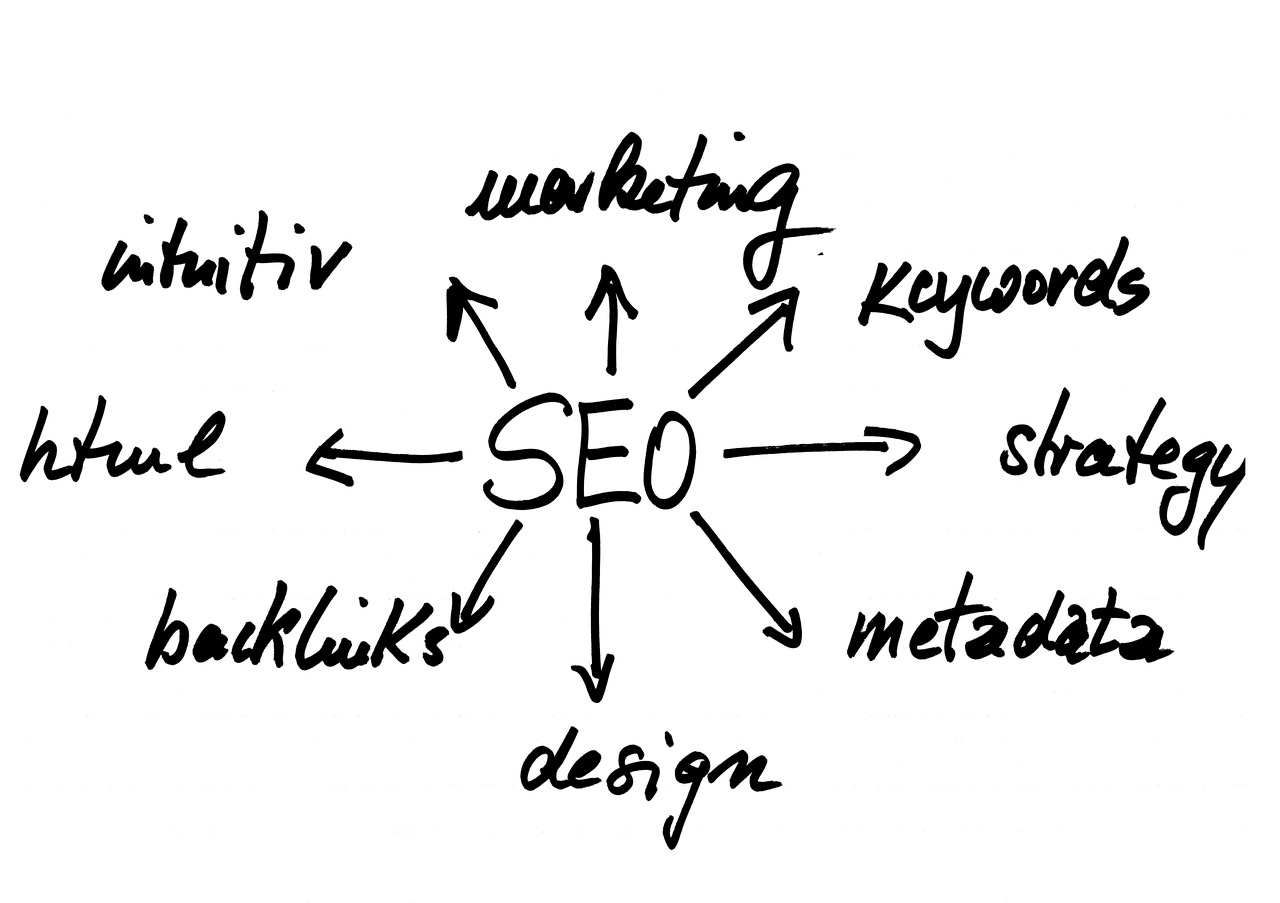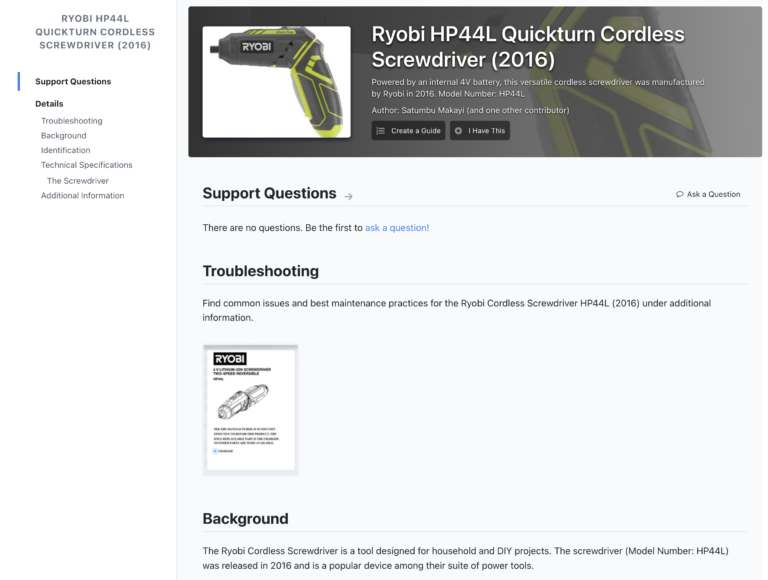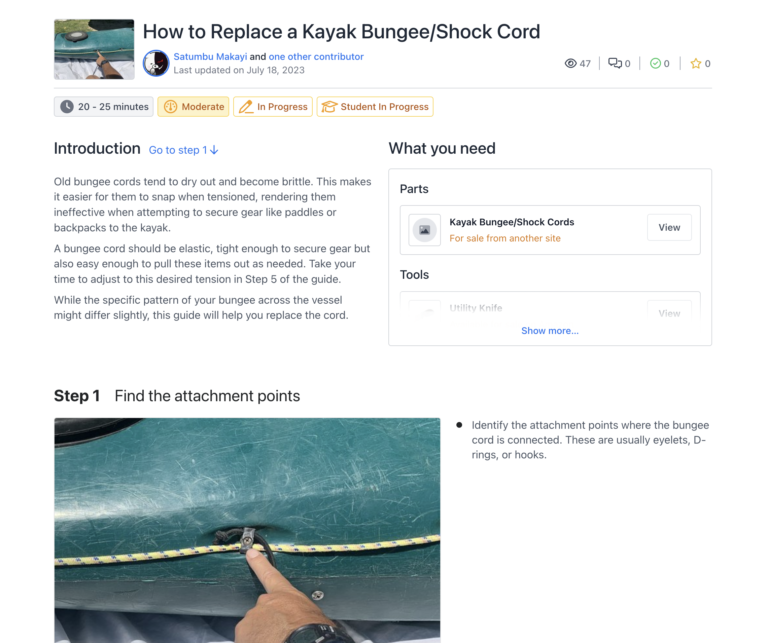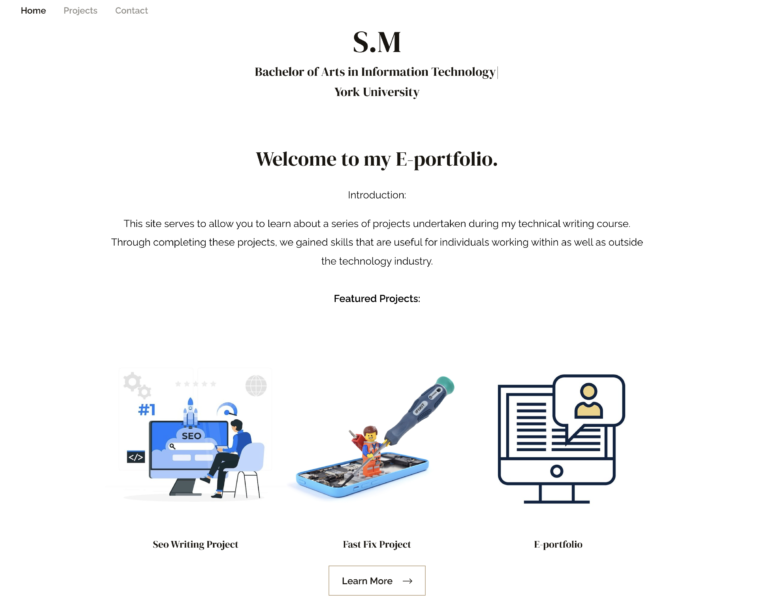AWS Cloud Resume Challenge
Embarking on the AWS Cloud Resume Challenge has been an exhilarating and educational experience. As an IT student, recently certified by AWS, I found this challenge to be the perfect opportunity to deepen my understanding and gain hands-on skills with AWS.
Through the challenge, I successfully created and deployed a responsive resume website hosted on the AWS cloud.
See the associated Github repository.

AWS Cloud Resume Challenge
Embarking on the AWS Cloud Resume Challenge has been an exhilarating and educational experience. As an IT student, recently certified by AWS, I found this challenge to be the perfect opportunity to deepen my understanding and gain hands-on skills with AWS.
Through the challenge, I successfully created and deployed a responsive resume website hosted on the AWS cloud.
See the associated Github repository.

This involved setting up an S3 bucket for static website hosting, configuring CloudFront for content delivery, and using Route 53 for DNS management. The process of integrating a serverless backend with DynamoDB to track visitor counts and Lambda functions to handle the logic was particularly enlightening. These steps not only reinforced my knowledge of AWS but also showcased the power and flexibility of serverless architectures.
Using GitHub, particularly GitHub Actions was another enlightening experience. I had always heard about the power and versatility of these tools, but actually diving into them gave me a much deeper appreciation. GitHub provided a robust platform for version control, making it easy to manage and track changes to my resume code. GitHub Actions, on the other hand, automated many aspects of my workflow, such as seamless deployment to my S3 bucket. This automation not only saved time but also ensured that my code was consistently integrated and deployed with minimal errors.
However, I realized there were several aspects of the challenge that I didn’t fully engage with, particularly points 11 and 14 – Tests & CI/CD (Backend). Point 11 emphasizes the importance of comprehensive testing. While I did some basic tests, I know I could dive deeper into writing and running comprehensive tests to ensure the reliability of my viewer count function. Testing is a critical component of any software development process, and mastering it will make my projects more robust and maintainable.
Point 14 involves implementing continuous integration and continuous deployment (CI/CD) for the backend using GitHub Actions. Although I touched on CI/CD for the frontend, I didn’t fully implement it for the backend. Setting up a CI/CD pipeline is crucial for automating the build, test, and deployment processes, ensuring that any changes to the codebase are seamlessly integrated and deployed. This is an area I am excited to explore further, as mastering CI/CD will significantly enhance my development workflow and productivity.
The AWS Cloud Resume Challenge has been a significant stepping stone in my journey as an IT professional. It has highlighted areas where I excel and the areas that need more attention. I am proud of the progress I’ve made so far.
I look forward to sharing more updates on my journey and the valuable lessons I learn along the way!
Technical Writing
Throughout the course, we had 3 projects to undertake. Each built on knowledge gained from previous work both inside and outside class.
The first 2 projects were facilitated by the iFixit platform which strives to make DIY repair the norm. The site encourages users with technical or non-technical know-how to organise device information and repair guides that are freely accessible for the public. Their noble endeavour has prevented tons of hardware being rendered useless and subsequently thrown out as waste.
Our final project was to create an ePortfolio to showcase these projects, as well as others I might embark on in the future.
SEO Writing Project
SEO stands for Search Engine Optimization. This is the practice of orienting a website to rank higher on a search engine results page in order to receive more traffic.
We were tasked with researching and writing a page for a hardware device. We focused on On-Page SEO which typically deals with site elements, that is, employing appropriate keywords, images and structure.
I chose to research and write about the Ryobi HP44L Quickturn Cordless Screwdriver (2016). I chose this because I wanted to add information about a practical tool that is potentially used by numerous people.
iFixit required us to include background information about the device, model identification, technical specifications as well as additional resources to aid users that might be seeking these details.
Through the steps outlined on the right, I learnt skills that have helped both my research and writing.
Steps Summary
- Create A Research Plan
- Collate Information
- Write A Working Draft
- Conduct User Testing
- Revise Draft Based On Feedback
- Submit Final Version For Approval
- Celebrate
- Let The World See
This webpage is live on the iFixit site. Users can freely access the information here at their leisure. Click the image below to view this page.
- RESEARCHING SKILLS
- Using keywords (e.g - Ryobi, Screwdriver, HP44L) and advanced search commands like "related" and "after" helped me find relevant webpages that were specific to this device model.
- Planning the search by using checklists, this helped guide me and allowed me to follow through with a focused approach.
- Using Google's E.A.T (Expertise, Authoritativeness, Trustworthiness) as criteria to analyse the quality of my search results. Checking each source against these points to determine their potential credibility. It was often helpful to further shortlist and compare information from different sites to ensure authenticity.
- WRITING SKILLS
- Using checklists to make sure I have covered all the required aspects of the project. Doing this both in research and writing helped make sure I don't leave out parts of the project that I could otherwise overlook but are important for readers seeking out this information.
- Adopting an appropriate structure (order) to aid the flow of information, selecting good titles and subtitles were important for this.
- Using simple and effective language to avoid ambiguity. Being concise further aided this, giving readers clarity and relevance simultaneously.
Steps Summary
- Create A Research Plan
- Collate Information
- Write A Working Draft
- Conduct User Testing
- Revise Draft Based On Feedback
- Submit Final Version For Approval
- Celebrate
- Let The World See
This webpage is live on the iFixit site. Users can freely access the information here at their leisure. Click the image below to view this page.
Fast Fix Project
In this project, we were given the responsibility of performing and documenting the steps to repair a household item.
There is a wide range of items that apply here, I chose to write a Kayak Bungee Cord Replacement Guide. Not only were we required to write a step-by-step guide for this, we also had to take a series of relevant action photos that correspond to the steps being described.
iFixit provided detailed instructions about their expectations for both the written and visual aspects of the project.
Through the steps outlined on the right, I was able to apply skills that I had acquired from the SEO Writing Project and learn additional skills that helped bring the webpage to fruition.
Steps Summary
- Conduct Research
- Choose Fix & Create Execution Plan
- Collate Information
- Shoot Photographs
- Write Step-By-Step Guide
- Conduct User Testing
- Revise Draft Based On Feedback
- Submit Final Version For Approval
- Celebrate
- Let The World See
This webpage is live on the iFixit site. Users can freely access the information here at their leisure. Click the image below to view this page.
- RESEARCHING SKILLS
- Filtering and comparing guides to learn how I can be as or more effective than the few already available. I noticed other guides did not have a clear step-by-step approach which iFixit emphasizes.
- Seeking out expertise allowed me to learn how to communicate my needs effectively and retrieve the relevant information I needed for this fix in a timely manner. The expert helped me narrow down and simplify the process. From my own research, I included removing the attachment points as one of the steps but he informed me this was not necessary in practice, which I know will be helpful to users.
- WRITING SKILLS
- Learning how to write an effective proposal that highlights the effort made during research. Including a background to show that the guide will help actual people and detailing how to perform the fix was important. Using appropriate language and structure aided making my proposal clear and easy to follow.
- Providing effective user feedback and constructive criticism from analyzing my peers projects. This process helped me highlight good things from their work that I could use and also present things that need improvement, ultimately to improve their overall project.
- PHOTOGRAPHY SKILLS
- Using angles to produce a first person perspective that helps show exactly how to perform the fix, in the readers perspective.
- Creating a flip-book effect by taking multiple shots of an action. This helps further create clarity for users, so they can perform the fix by using images as the guide instead of solely relying on the written steps.
- Editing images to ensure the action is centred with little wasted space and background clutter.
Steps Summary
- Conduct Research
- Choose Fix & Create Execution Plan
- Collate Information
- Shoot Photographs
- Write Step-By-Step Guide
- Conduct User Testing
- Revise Draft Based On Feedback
- Submit Final Version For Approval
- Celebrate
- Let The World See
This webpage is live on the iFixit site. Users can freely access the information here at their leisure. Click the image below to view this page.
E-portfolio
Living in an increasing digital world, having a platform to showcase your work and previous experience is important.
This project led me to create this very website! Adapting skills learnt from previous projects allowed me to do this.
Through the steps outlined on the right, I was able to use skills that I had acquired from my previous projects, I found these were particularly important when designing the site:
- WEB DESIGN SKILLS
- Structure - I made sure to incorporate a steady flow of information through general paragraphing and sectioning.
- Navigation - I kept readers in mind, allowing them to navigate this page and linked pages with ease.
- Concision - I chose to include relevant information that provides a good understanding of the projects as well as skills required, without fatiguing the reader.
- Visual - I kept it simple by avoiding cluttered backgrounds so readers may focus on the content and appreciate the subtle design choices.
- Visual - Made use of different text formats and icon lists to highlight specific sections and further aid reading.
Overall Reflection
My journey during WRIT2201: Effective Writing & Research In Information Technology was both fruitful and challenging.
Previous writing focused courses I’ve completed differed in a major way, that is, planning. Other courses will usually provide a general expectation (a certain number of words & MLA or APA, for example).
With that, my approach was Ready-Fire-Aim. I would jot down a general plan, which was essentially just the structure I wanted, and I’d start writing from there. I would adjust and make improvements when I had written down all my points. While this usually worked, I now see why it isn’t the most effective approach.
This course pushed me to aim before firing into a project. Planning and gathering all my information before moving forward created a clarity that can only come from knowing the end before the beginning. Even though I still had to improve and adjust details, the results turned out a lot better than they would otherwise.
User-centred writing was another great takeaway from this course. Our projects all had an intended audience that we had to remain aware of. While my projects dealt with tools and repairs that perhaps only cater to people involved in associated fields, I had to ensure that the information here would be useful to people regardless of their expertise. I believe this translates to anything instructional or informative available for people to access today.
The projects and skills we were exposed to in this course helped highlight room for improvement, particularly in planning and time management. The methods to do this will definitely play a part in all my future endeavours.





